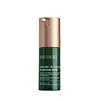What's inside
What's inside
 Key Ingredients
Key Ingredients

 Benefits
Benefits

 Concerns
Concerns

 Ingredients Side-by-side
Ingredients Side-by-side

Water
Skin ConditioningGlycerin
HumectantPentylene Glycol
Skin ConditioningXylitylglucoside
HumectantPanthenol
Skin ConditioningCamellia Oleifera Seed Oil
Skin ConditioningSodium Hyaluronate
HumectantAnhydroxylitol
HumectantXylitol
HumectantSodium Dilauramidoglutamide Lysine
HumectantTocopheryl Acetate
AntioxidantTocopherol
AntioxidantAcacia Senegal Gum
MaskingSclerotium Gum
Emulsion StabilisingXanthan Gum
EmulsifyingPantolactone
HumectantCitric Acid
BufferingSodium Hydroxide
BufferingEthylhexylglycerin
Skin ConditioningPhenoxyethanol
PreservativeParfum
MaskingWater, Glycerin, Pentylene Glycol, Xylitylglucoside, Panthenol, Camellia Oleifera Seed Oil, Sodium Hyaluronate, Anhydroxylitol, Xylitol, Sodium Dilauramidoglutamide Lysine, Tocopheryl Acetate, Tocopherol, Acacia Senegal Gum, Sclerotium Gum, Xanthan Gum, Pantolactone, Citric Acid, Sodium Hydroxide, Ethylhexylglycerin, Phenoxyethanol, Parfum
Water
Skin ConditioningCaprylic/Capric Triglyceride
MaskingLactic Acid
BufferingSqualane
EmollientGlycerin
HumectantSodium Hydroxide
BufferingCetearyl Olivate
Propanediol
SolventSorbitan Olivate
EmulsifyingCetearyl Alcohol
EmollientLespedeza Capitata Leaf/Stem Extract
Skin ConditioningPolyacrylate Crosspolymer-6
Emulsion StabilisingAcacia Senegal Gum
MaskingSodium Gluconate
Skin ConditioningXanthan Gum
EmulsifyingPhenoxyethanol
PreservativeEthylhexylglycerin
Skin ConditioningLavandula Angustifolia Oil
MaskingLinalool
PerfumingWater, Caprylic/Capric Triglyceride, Lactic Acid, Squalane, Glycerin, Sodium Hydroxide, Cetearyl Olivate, Propanediol, Sorbitan Olivate, Cetearyl Alcohol, Lespedeza Capitata Leaf/Stem Extract, Polyacrylate Crosspolymer-6, Acacia Senegal Gum, Sodium Gluconate, Xanthan Gum, Phenoxyethanol, Ethylhexylglycerin, Lavandula Angustifolia Oil, Linalool
 Reviews
Reviews

Ingredients Explained
These ingredients are found in both products.
Ingredients higher up in an ingredient list are typically present in a larger amount.
Acacia Senegal Gum has skin soothing, thickening, and formulation stabilizing properties. It comes from the Acacia tree that is native to sub-Saharan Africa.
Ethylhexylglycerin (we can't pronounce this either) is commonly used as a preservative and skin softener. It is derived from glyceryl.
You might see Ethylhexylglycerin often paired with other preservatives such as phenoxyethanol. Ethylhexylglycerin has been found to increase the effectiveness of these other preservatives.
Glycerin is already naturally found in your skin. It helps moisturize and protect your skin.
A study from 2016 found glycerin to be more effective as a humectant than AHAs and hyaluronic acid.
As a humectant, it helps the skin stay hydrated by pulling moisture to your skin. The low molecular weight of glycerin allows it to pull moisture into the deeper layers of your skin.
Hydrated skin improves your skin barrier; Your skin barrier helps protect against irritants and bacteria.
Glycerin has also been found to have antimicrobial and antiviral properties. Due to these properties, glycerin is often used in wound and burn treatments.
In cosmetics, glycerin is usually derived from plants such as soybean or palm. However, it can also be sourced from animals, such as tallow or animal fat.
This ingredient is organic, colorless, odorless, and non-toxic.
Glycerin is the name for this ingredient in American English. British English uses Glycerol/Glycerine.
Learn more about GlycerinPhenoxyethanol is a preservative that has germicide, antimicrobial, and aromatic properties. Studies show that phenoxyethanol can prevent microbial growth. By itself, it has a scent that is similar to that of a rose.
It's often used in formulations along with Caprylyl Glycol to preserve the shelf life of products.
Sodium Hydroxide is also known as lye or caustic soda. It is used to adjust the pH of products; many ingredients require a specific pH to be effective.
In small amounts, sodium hydroxide is considered safe to use. However, large amounts may cause chemical burns due to its high alkaline.
Your skin has a natural pH and acid mantle. This acid mantle helps prevent harmful bacteria from breaking through. The acid mantle also helps keep your skin hydrated.
"Alkaline" refers to a high pH level. A low pH level would be considered acidic.
Learn more about Sodium HydroxideWater. It's the most common cosmetic ingredient of all. You'll usually see it at the top of ingredient lists, meaning that it makes up the largest part of the product.
So why is it so popular? Water most often acts as a solvent - this means that it helps dissolve other ingredients into the formulation.
You'll also recognize water as that liquid we all need to stay alive. If you see this, drink a glass of water. Stay hydrated!
Learn more about WaterXanthan gum is used as a stabilizer and thickener within cosmetic products. It helps give products a sticky, thick feeling - preventing them from being too runny.
On the technical side of things, xanthan gum is a polysaccharide - a combination consisting of multiple sugar molecules bonded together.
Xanthan gum is a pretty common and great ingredient. It is a natural, non-toxic, non-irritating ingredient that is also commonly used in food products.
Learn more about Xanthan Gum